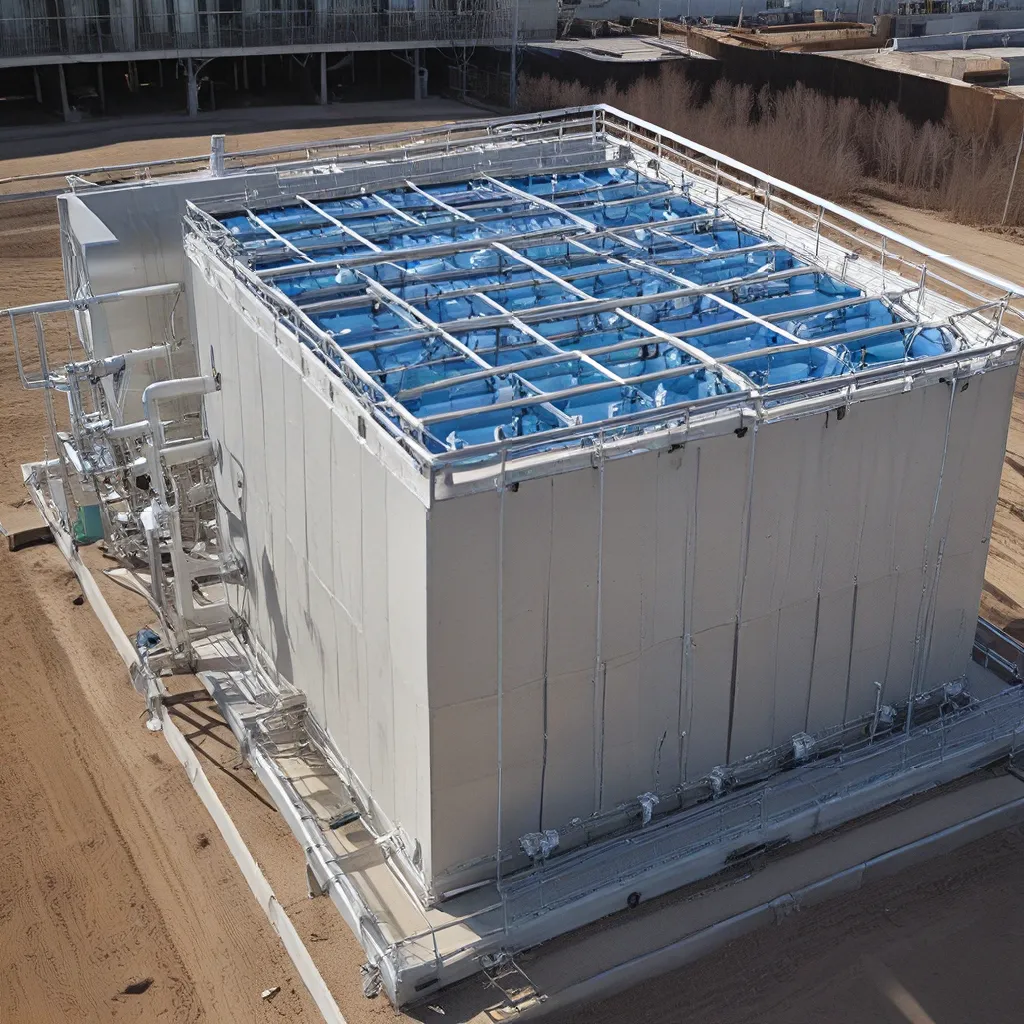
As an advocate for sustainable water treatment solutions, I’m thrilled to share with you the remarkable progress happening in the world of membrane bioreactor (MBR) technology. This innovative approach has the potential to revolutionize the way we manage our wastewater, and I can’t wait to dive into the exciting developments that are shaping the future of this field.
The Rise of MBR: Addressing the Limitations of Traditional Methods
The traditional activated sludge process has long been the go-to method for wastewater treatment, but its limitations have become increasingly apparent. The large space requirements, low efficiency, and high costs associated with this approach have paved the way for the emergence of MBR technology.
As the experts have noted, the conventional activated sludge (CAS) process and tertiary filtration can now be replaced by the more efficient and compact MBR system. This innovative solution not only streamlines the treatment process but also offers superior permeate quality, simpler operational management, and a reduced footprint requirement.
Imagine a world where wastewater treatment is no longer a complex and resource-intensive endeavor, but rather a seamless and sustainable operation. That’s the promise of MBR technology, and it’s a promise that’s quickly becoming a reality.
Diving into the Technical Details: Exploring MBR’s Inner Workings
To truly appreciate the advancements in MBR technology, let’s delve into the technical aspects that make this approach so compelling. The structural features and design parameters of an MBR system are the key to its efficiency and effectiveness.
Membrane surface properties, permeate flux, retention time, pH, alkalinity, temperature, and cleaning frequency are just a few of the variables that can be carefully adjusted to optimize the MBR process. As the research indicates, these factors can have a significant impact on the overall performance of the system.
For instance, the submerged MBR can handle lower permeate flux and requires less power, while the side-stream MBR can handle higher permeate flux but requires more power. The choice between these two configurations ultimately depends on the specific needs and constraints of the wastewater treatment facility.
But the technical advancements don’t stop there. MBR technology is also tackling some of the operational challenges that have plagued conventional water treatment methods. The quality of sludge, equipment requirements, and fouling are just a few of the issues that MBR developers are working hard to address.
Navigating the Challenges: Overcoming the Obstacles to Sustainable Water Treatment
As with any revolutionary technology, MBR systems aren’t without their challenges. But I’m here to tell you that the experts and innovators in this field are rising to the occasion, and the future of sustainable water treatment is looking brighter than ever.
According to the latest research, the energy limitations, climatic changes, and resource depletion that have plagued traditional wastewater treatment systems are no match for the adaptability and efficiency of MBR technology.
When compared to the CAS process, MBR has been shown to deliver better permeate quality, simpler operational management, and a reduced footprint requirement. These advantages are particularly crucial in light of the growing global demand for clean water and the ever-increasing pressure on our natural resources.
But the journey to sustainable water treatment isn’t without its uncertainties. As with any complex scientific endeavor, there are ongoing debates and active areas of research that need to be carefully navigated. Some experts believe that certain operational issues, like sludge quality and fouling, may require further optimization. Others suggest that the energy consumption of MBR systems could be an area for continued improvement.
And that’s where the true beauty of MBR technology shines through. The ability to adapt, evolve, and address emerging challenges is what sets this approach apart. As we continue to uncover new insights and push the boundaries of what’s possible, I have no doubt that MBR will emerge as a powerful and indispensable tool in the quest for sustainable water management.
The Future of Water Treatment: Embracing the MBR Revolution
As I reflect on the remarkable advancements in MBR technology, I can’t help but feel a sense of excitement and optimism for the future of water treatment. This innovative approach has the potential to transform the way we think about and manage our most precious resource – water.
At Alpha Wastewater, we’re proud to be at the forefront of this revolution. Our team of dedicated experts is constantly exploring new ways to leverage MBR technology to deliver exceptional results for our clients. We’re likely to see even more exciting developments in the years to come, as the ever-evolving field of membrane bioreactors continues to push the boundaries of what’s possible.
So, I encourage you to stay informed, stay engaged, and embrace the future of sustainable water treatment. Whether you’re a water industry professional, an environmental enthusiast, or simply someone who cares about the health of our planet, the advancements in MBR technology are something to celebrate and support.
Let’s work together to unlock the full potential of this remarkable technology and usher in a new era of clean, efficient, and environmentally responsible water management. The future is bright, and it’s powered by the incredible innovations happening in the world of membrane bioreactors.